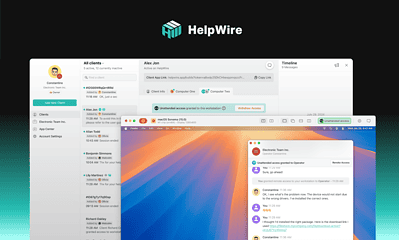Sponsored
Security testing for LLMs: Challenges, scope, and best practices
LLMs are taking the spotlight as they weave into everyday products. Security testing is key—focus on prompt injection, data leaks, and output safety to keep them in check.

Just a heads up, if you buy something through our links, we may get a small share of the sale. It’s one of the ways we keep the lights on here. Click here for more.
As Large Language Models (LLMs) become integrated into real-world products, such as automating support, writing code, or handling sensitive data, the need for proper safeguards increases.
Traditional application testing often fails to identify the unique risks that these systems present.
That’s where security testing services for LLM come in. Unlike regular apps, LLMs rely on unpredictable inputs and training data, which can lead to issues like prompt injection, data leakage, or unsafe output behavior.
While LLMs offer remarkable capabilities, they also create attack surfaces that are often overlooked. Without targeted testing, it’s nearly impossible to spot these problems early.
In this article, we’ll break down the key areas to focus on, how security testing is typically performed, and common mistakes that teams can avoid.
What to Test: Core Areas in LLM Security
Testing LLMs isn’t just about input fuzzing or standard API checks. It’s about understanding how a model behaves under real-world pressure, especially when interacting with unpredictable users or integrating with sensitive systems.
Key areas to focus on include:
- Prompt injection – Inputs that override system instructions or trigger unintended responses.
- Sensitive data exposure – Leaking of internal, training, or user-specific data through crafted queries.
- Output safety – Generation of harmful, misleading, or unsafe responses like code snippets or links.
- Access control bypass – Circumventing permission boundaries via model interaction.
- Insecure plugin/tool execution – Triggering unauthorized actions through integrated tools or APIs.
- Model hallucinations in critical workflows – Fabricating responses in legal, medical, or financial use cases.
- Abuse vectors – Inputs designed to cause resource exhaustion or degrade model performance.
These areas form the backbone of effective LLM security testing.
Testing Approaches and Methodology
Security testing for LLMs blends techniques from traditional application testing, red teaming, and adversarial machine learning.
It’s less about static scans and more about simulating how real attackers might interact with the model.
A typical process involves preparing structured and semi-random prompts to probe for weak spots, ranging from bypassing guardrails to leaking internal context.
Dialogue chaining, prompt fuzzing, and multi-turn interaction testing are key to uncovering hidden behaviors that don’t surface in isolated cases.
Testing should also assess how the model interacts with external tools or APIs. If the LLM can trigger actions like sending emails or running code, the risks increase.
These paths require close inspection under both expected and adversarial conditions.
Many teams now align their efforts with the OWASP Top 10 for LLMs, ensuring that critical categories, such as insecure output handling and excessive delegation, are covered.
Practical Engagement Format
Security testing for LLMs can vary depending on how the model is used and the level of access available during the assessment. Cybersecurity service providers typically work across three engagement types:
- Black-box – Testing public-facing chatbots or LLM interfaces without prior knowledge of the system internals.
- Grey-box – Involving access to model APIs, context formatting, or limited documentation to simulate insider-level misuse.
- White-box – Full visibility into system architecture, prompts, plugins, and internal logic for the most thorough testing.
Deliverables usually include a risk-ranked report, practical reproduction steps, recommended fixes, and a retesting phase.
The goal is to identify flaws and assist teams in building safer and more predictable LLM-based products.
Common Findings and Patterns
Even well-designed LLM applications often share similar security gaps.
One of the most frequent issues is prompt injection, especially when user inputs are loosely integrated into system prompts or instructions. These flaws can lead to unwanted behavior, policy overrides, or data leakage.
Another recurring problem is unsafe output, where models generate code, links, or statements that shouldn’t appear in specific contexts, particularly in regulated environments.
Tool-enabled LLMs tend to suffer from insecure plugin usage, where actions like file access or API calls can be misused or triggered unintentionally.
In many cases, access control logic isn’t enforced at the model level, making it easier for attackers to escalate functionality. Edge-case testing also reveals hallucinations in workflows where factual accuracy is essential.
Best Practices to Reduce Risk
Securing LLM-powered applications requires a layered and proactive approach.
One of the most effective measures is strict prompt handling, which involves applying input validation, escaping user-provided content properly, and avoiding mixing user input directly with control instructions.
Use role separation where possible: system prompts should enforce logic boundaries, and user prompts should remain isolated.
When tools or APIs are involved, apply access controls and avoid exposing critical actions to the model without context-aware filtering or confirmation.
Remember, monitoring plays a vital role. Log inputs and outputs, flag anomalies, and define thresholds for rate limiting or token usage.
Finally, treat LLM updates or configuration changes as deployment events – any update can introduce new behavior, so regular retesting should be built into the lifecycle.
Conclusion
As LLMs transition from experiments to core business components, the approach to their security must also evolve.
These systems operate differently than traditional applications, and testing them requires a different mindset – one focused on language, behavior, and emergent risk.
Security testing services for LLM help teams surface vulnerabilities that are otherwise easy to miss. Whether the goal is to meet compliance requirements, protect sensitive data, or avoid unpredictable failures, structured testing provides a clear path forward.
Safety in complex systems arises from testing, observation, and informed choices rather than mere hope.
What are your thoughts on the security challenges of testing Large Language Models? Have you faced any of these issues or have strategies to share? Drop a comment below or join the conversation on our Facebook and Twitter!
Editors’ Recommendations:
Disclosure: This is a sponsored post. However, our opinions, reviews, and other editorial content are not influenced by the sponsorship and remain objective.




































